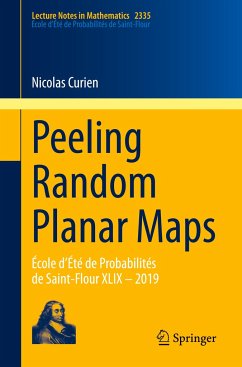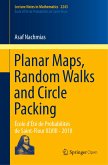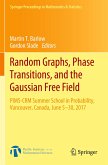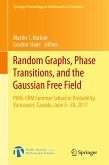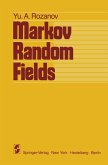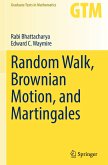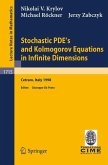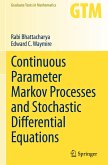These Lecture Notes provide an introduction to the study of those discrete surfaces which are obtained by randomly gluing polygons along their sides in a plane. The focus is on the geometry of such random planar maps (diameter, volume growth, scaling and local limits...) as well as the behavior of statistical mechanics models on them (percolation, simple random walks, self-avoiding random walks...).
A "Markovian" approach is adopted to explore these random discrete surfaces, which is then related to the analogous one-dimensional random walk processes. This technique, known as "peeling exploration" in the literature, can be seen as a generalization of the well-known coding processes for random trees (e.g. breadth first or depth first search). It is revealed that different types of Markovian explorations can yield different types of information about a surface.
Based on an École d'Été de Probabilités de Saint-Flour course delivered by the author in 2019, the book is aimed at PhD students and researchers interested in graph theory, combinatorial probability and geometry. Featuring open problems and a wealth of interesting figures, it is the first book to be published on the theory of random planar maps.
Hinweis: Dieser Artikel kann nur an eine deutsche Lieferadresse ausgeliefert werden.
A "Markovian" approach is adopted to explore these random discrete surfaces, which is then related to the analogous one-dimensional random walk processes. This technique, known as "peeling exploration" in the literature, can be seen as a generalization of the well-known coding processes for random trees (e.g. breadth first or depth first search). It is revealed that different types of Markovian explorations can yield different types of information about a surface.
Based on an École d'Été de Probabilités de Saint-Flour course delivered by the author in 2019, the book is aimed at PhD students and researchers interested in graph theory, combinatorial probability and geometry. Featuring open problems and a wealth of interesting figures, it is the first book to be published on the theory of random planar maps.
Hinweis: Dieser Artikel kann nur an eine deutsche Lieferadresse ausgeliefert werden.
"This lengthy monograph is an excellent addition to the long-running École d'Été de Probabilités de Saint-Flour series of extended lecture notes, continuing their tradition of reader-friendly (for an active researcher in mathematical probability) authoritative accounts of an active technical topic. It has the traditional underlying definition/ theorem/proof format ... and numerous well thought out figures, which (to your reviewer) are essential for any work on graph theory. ... this monograph will long remain a key account of its topics." (David J. Aldous, Mathematical Reviews, December, 2024)

